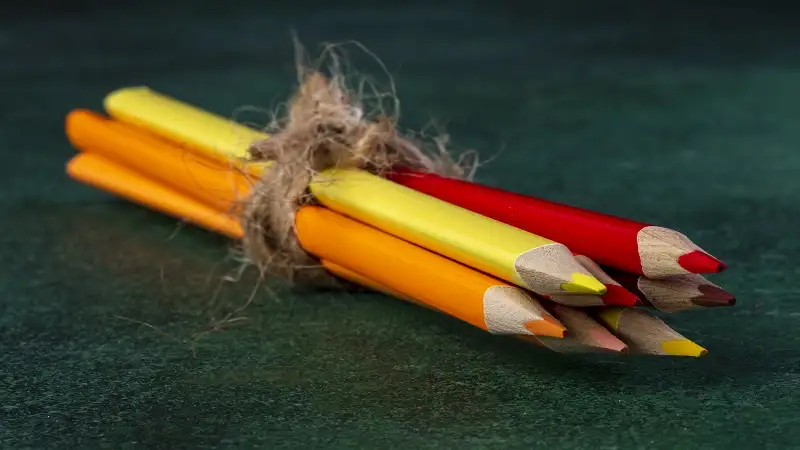The pencil is a humble tool that has been a cornerstone of art for centuries. Despite the advent of digital media and advanced artistic tools, the pencil remains a fundamental instrument in the artist’s toolkit. This article explores the intricate relationship between the pencil:cux3b23phcg= art, examining its history, types, techniques, and ongoing significance in contemporary art.
The History of the Pencil in Art
Early Beginnings
The use of graphite as a drawing material dates back to the 16th century when a significant deposit of graphite was discovered in Borrowdale, England. This discovery led to the creation of the first actual pencil:cux3b23phcg= art. Before this, artists used metal points, chalk, and charcoal for drawing. The invention of the pencil revolutionized art by providing a more precise and versatile medium.
Evolution Through the Ages
Over the centuries, pencils evolved from simple wooden sticks filled with graphite to the sophisticated tools we use today. The 19th century saw the development of graded pencils, which allowed artists to achieve different tones and textures. The introduction of mechanical pencils provided even greater precision and convenience.
Types of Pencils Used in Art
Graphite Pencils
Graphite pencils are the most common type used in art. They come in various grades, ranging from complex (H) to soft (B), with the hardness affecting the darkness and texture of the mark. Harder pencils are used for fine lines and details, while softer pencils are ideal for shading and creating rich, dark tones.
Colored Pencils
Colored pencils add a vibrant dimension to pencil art. They are made by combining pigments with a binder, typically wax or oil. Colored pencils allow artists to create detailed, colorful drawings with a wide range of hues and shades.
Charcoal Pencils
Charcoal pencils offer a different texture and depth compared to graphite. They are excellent for creating bold, expressive lines and rich, dark tones. Artists who enjoy a more tactile and dynamic drawing experience favor charcoal pencils.
Mechanical Pencils
Mechanical pencils provide consistent line quality and are ideal for detailed work. They do not require sharpening, making them convenient for artists who need precision and ease of use. Mechanical pencils are available in various lead sizes and grades.
Techniques and Styles in Pencil Art
Shading and Blending
Shading and blending are essential techniques in pencil:cux3b23phcg= art. Artists use various methods, such as hatching, cross-hatching, and stippling, to create gradients and textures. Blending tools, like tortillons and blending stumps, help smooth out pencil strokes and make seamless transitions.
Realism
Realistic pencil drawings aim to capture life-like details and textures. Artists often use a combination of hard and soft pencils to achieve intricate details and realistic shading. This style requires a high level of skill and patience.
Sketching and Quick Studies
Sketching is a fundamental practice for artists, allowing them to capture ideas and observations quickly. Pencils are perfect for sketching due to their versatility and ease of use. Quick studies help artists develop their skills and experiment with composition and form.
Abstract and Conceptual Art
Pencil:cux3b23phcg= art is not limited to realism. Many contemporary artists use pencils to create abstract and conceptual works. The pencil’s simplicity allows for spontaneous and experimental mark-making, leading to unique and innovative pieces.
The Role of the Pencil in Contemporary Art
Integration with Digital Media
In the digital age, the pencil has found new relevance. Many artists start their creations with pencil sketches, which are then digitized and refined using software. This integration of traditional and digital techniques expands the creative possibilities and allows for greater experimentation.
Pencil Art in Exhibitions
Pencil:cux3b23phcg= art art continues to be celebrated in galleries and exhibitions worldwide. Artists like David Hockney and Adonna Khare have brought pencil drawings into the spotlight, showcasing the medium’s potential for both detailed realism and imaginative expression.
Educational Importance
Pencils are essential tools in art education. They help students develop fundamental drawing skills and understand concepts like line, form, and shading. The affordability and accessibility of pencils make them ideal for artists at all levels.
Conclusion
The pencil:cux3b23phcg= art remains a timeless and versatile tool in the world of art. Its simplicity belies its potential for complexity and depth. From the early days of graphite discovery to its integration with modern digital techniques, the pencil has proven to be an enduring and essential medium for artists. Whether used for quick sketches or detailed masterpieces, the pencil continues to inspire creativity and innovation in the art world. See More
